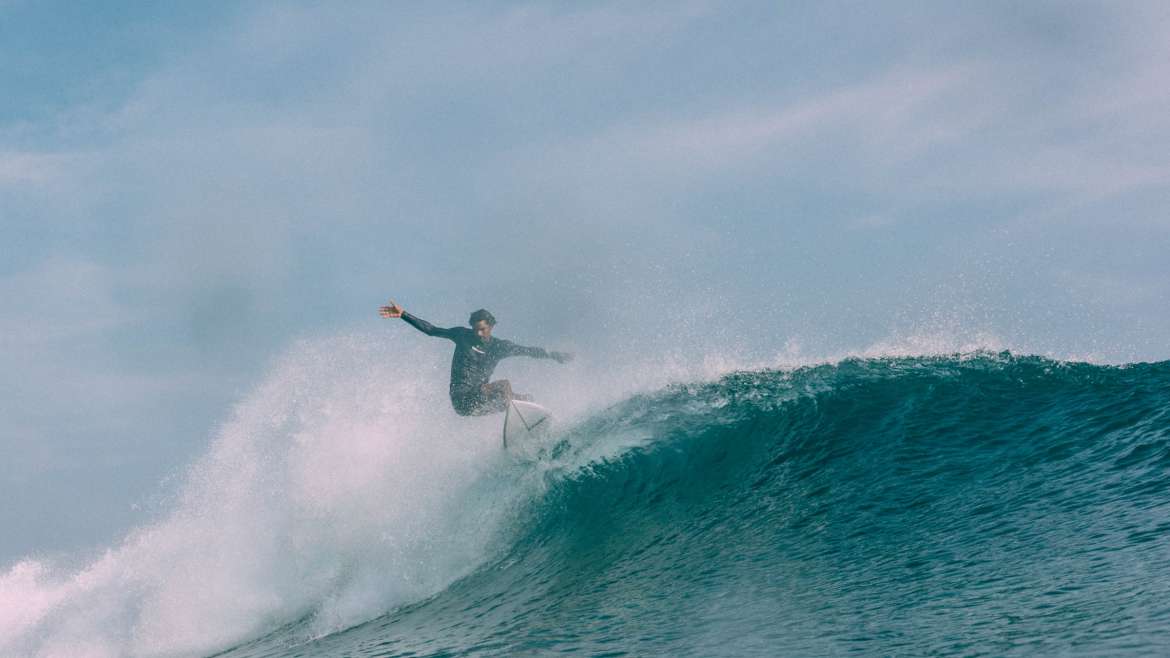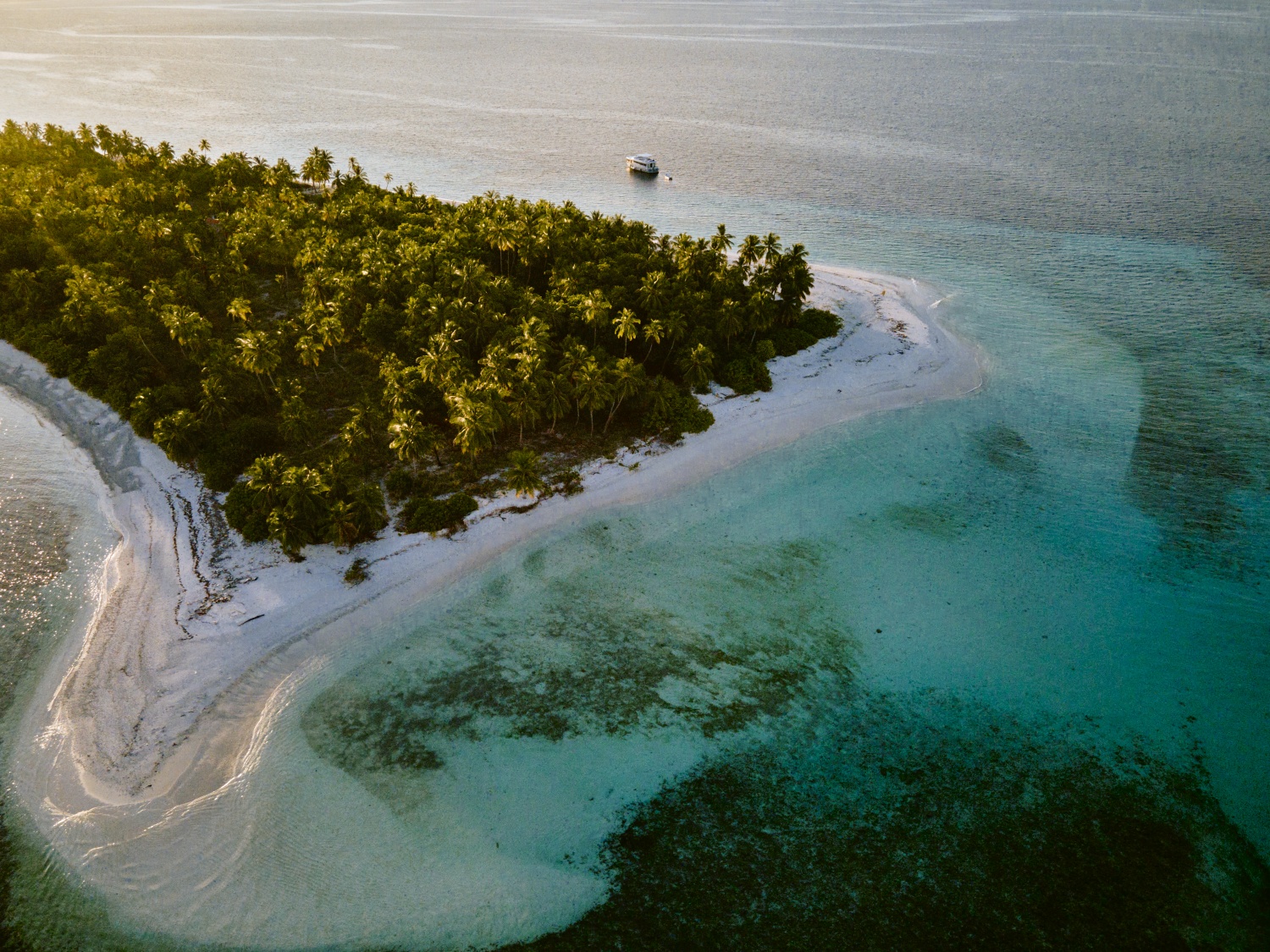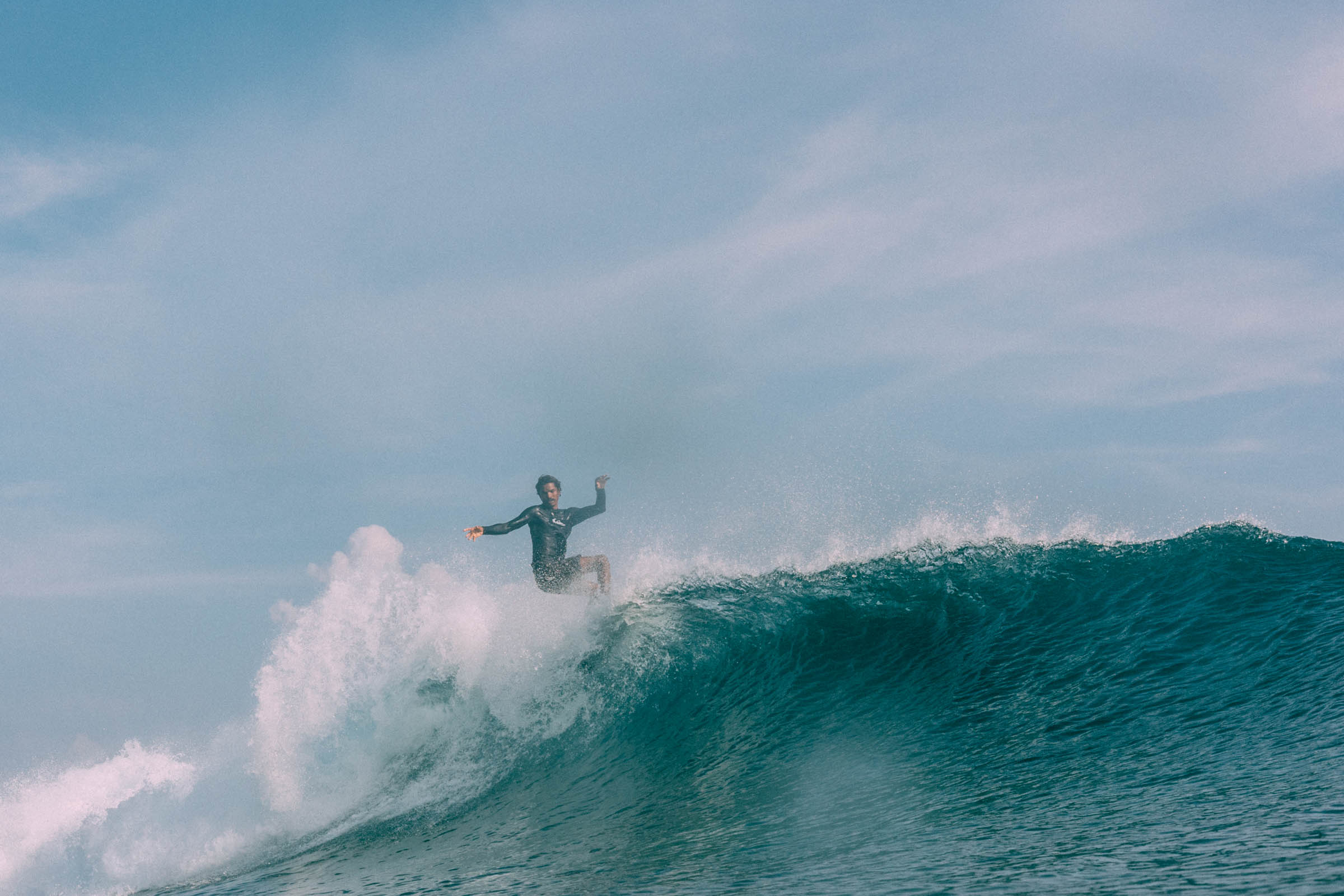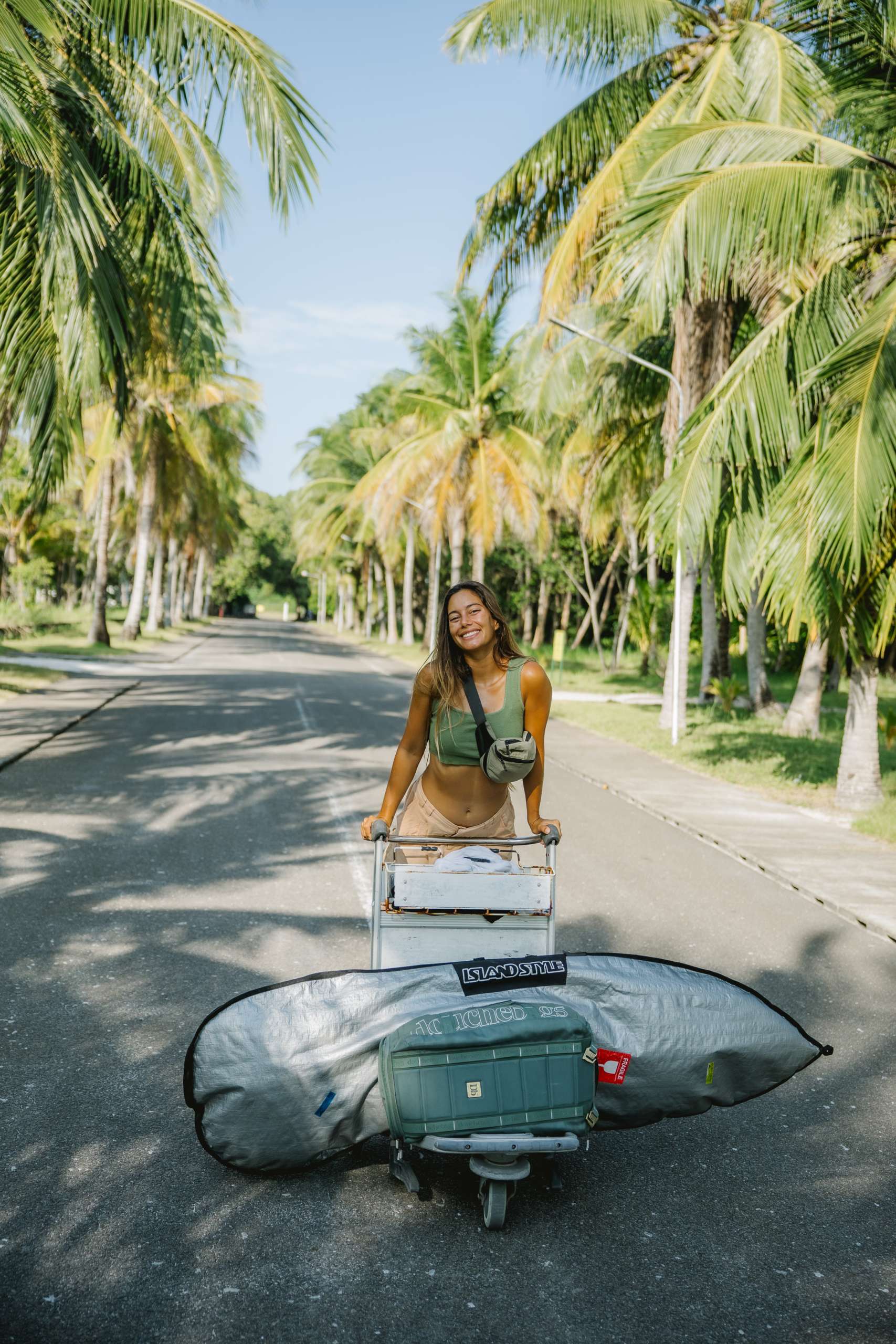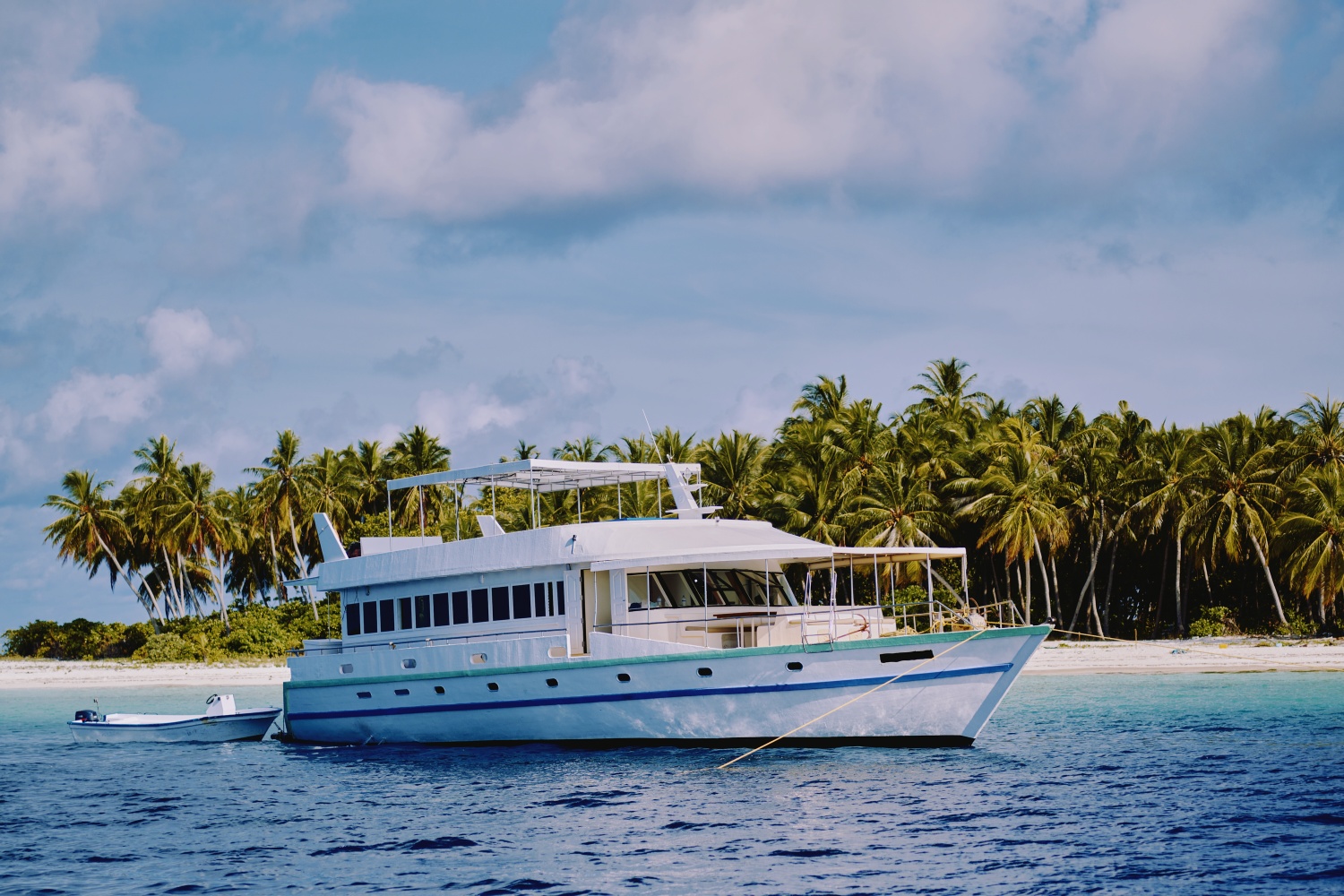Surfing the Maldives is a dream for many surfers, thanks to its world-class waves and stunning tropical scenery. Before you pack your bags, there are a few key things you need to know. Being aware of the costs, crowd conditions, and ideal surf spots can make your experience much smoother and more enjoyable.
The Maldives offer waves suitable for all skill levels, from the playful and forgiving to the fast and hollow. You’ll find surf points ranging from the Northern to the Southern Atolls. Picking the right surfboard is also essential; bring the one you feel most comfortable with, as you’ll mostly encounter waves that allow an easy takeoff.
You’ll also benefit from knowing the local dynamics, such as possible privatization of surf spots and peak surfing seasons. The Maldives provide a unique experience in the Indian Ocean, combining adventure with a peaceful atmosphere. Make sure you’re well-prepared to make the most of your Maldives surf trip and enjoy every moment on these tropical waves.
Choosing the Right Time to Surf
Timing your surf trip to the Maldives carefully can enhance your experience considerably. The seasonal patterns and monsoon influences are crucial factors to consider.
Understanding the Surfing Season
The Maldives’ peak surfing season is from April to October. During these months, the islands experience consistent southeast swells. These swells provide excellent waves for surfing, making it the best time for wave enthusiasts. The months of June to August often have the biggest and most powerful swells, ideal for skilled surfers.
Mornings and evenings generally offer the best conditions. Winds are typically lighter, leading to smoother, cleaner waves. You’ll find fewer crowds if you surf early in the season, closer to April or later around October.
Surfers of all skill levels can find suitable conditions. The Maldives is known for its variety of wave types, from fast, hollow breaks to gentle, rolling waves. This diversity ensures that both beginners and advanced surfers can find waves to match their abilities.
Considering the Monsoon Influence
Maldives’ weather is also influenced by monsoons. The Southwest Monsoon occurs from May to October. This period corresponds with the best surfing season but can bring variable weather. While it generally leads to better swells, occasional storms might disrupt your surfing plans.
The Northeast Monsoon, from November to March, results in smaller waves and less consistent swells. This period is less ideal for surfing but offers calmer water and better overall weather conditions, making it suitable for less experienced surfers or those seeking a more relaxed trip.
It’s crucial to monitor weather forecasts and be prepared for sudden changes. Even during the peak season, a few stormy days can affect surf conditions. Planning flexible travel dates can help you maximize your surfing opportunities and adapt to changing weather patterns.
Selecting the Perfect Surf Spot

Selecting the perfect surf spot in the Maldives involves knowing famous breaks and matching them to your skill level. This ensures you get the most out of your surfing experience in these scenic waters.
Famous Maldives Breaks
Some of the most renowned surf spots in the Maldives include Cokes, Chickens, Sultans, and Jailbreaks. Cokes is ideal for those seeking powerful waves, with its right-handed barrels providing thrilling rides. Chickens offers consistent left-handers and is known for its fast waves, making it a great spot for adventurous surfers.
Sultans is another must-visit break. It offers long and smooth right-handers that can be enjoyed by many skill levels, particularly when the swell is smaller. Located close to Sultans, Honkeys features long left-handers that are best at low tide, providing a different challenge.
Breaks like these make the Maldives a premier destination for surfers. For more information about exploring these spots with experienced guidance, visit Surf Charter Maldives.
Breaks for Your Skill Level
Beginners should start with spots like Sultans, which is more forgiving and allows for an easy take-off. Chickens can also be good for intermediate surfers due to its consistency, though it’s best to assess conditions before hitting the water.
For advanced surfers, Cokes and Jailbreaks are excellent choices. Cokes demands respect with its powerful rights, perfect for those confident in handling bigger waves. Jailbreaks offers speedy, right-hand barrels that can be thrilling yet challenging.
Matching your skill level to the right break ensures a safe and enjoyable experience, regardless of conditions. Always consider wave size and shape, and be honest about your abilities. Surfing in the Maldives offers something for everyone, making it essential to choose the right spot for your skills.
Preparing for Your Trip
Before you head to the Maldives for surfing, it’s crucial to make sure you have the right gear and are in good physical shape. Each small detail can significantly impact your experience.
What to Bring
When packing for your trip, start with your surfboard. Choose one that you are comfortable with as the waves can be either forgiving or challenging. A rash vest is essential to protect against rashes from prolonged board use and the sun.
You’ll also need high-SPF sunscreen. The tropical sun in the Maldives can be intense, so it’s important to protect your skin to avoid sunburns. Light, comfortable clothing is a must, and don’t forget a few modest outfits for visiting local villages or Malé City.
Consider bringing:
- Surfboard and extra fins
- Rash vest
- High-SPF sunscreen
- Lightweight clothing
- Modest outfits for cultural respect
Physical Fitness and Training
Surfing in the Maldives requires you to be in good shape. Focus on improving your cardio and strength training. Swimming or paddling exercises are excellent for building the stamina needed for catching waves and spending long hours in the water.
Engage in flexibility exercises such as yoga to enhance your balance on the surfboard. Practice pop-ups and agility drills to prepare for quick take-offs. This will make navigating waves much easier.
Create a balanced fitness routine:
- Cardio exercises (running or swimming)
- Strength training (push-ups, squats)
- Flexibility workouts (yoga or stretching)
- Surf-specific drills (pop-ups, paddling)
Choosing Accommodation
When planning a surf trip to the Maldives, choosing the right accommodation is key. You have two primary options: staying in surf camps or luxury resorts, and booking a surf charter.
Surf Camps vs Luxury Resorts
Surf camps in the Maldives cater specifically to surfers. They often provide guided surf sessions, equipment rentals, and lessons. These camps are usually located near popular surf spots, making it easy to access great waves.
Staying at a surf camp is typically more affordable. It’s a good choice if you want to focus on surfing and connect with other surfers. Accommodations are modest, but you get everything you need for a comfortable stay.
Luxury resorts, on the other hand, offer a more opulent experience. These resorts are situated on private islands and offer high-end amenities such as spas, fine dining, and private villas. You can still access great surf spots, but you do so in greater comfort and style. It’s perfect if you are looking for a mix of surfing and relaxation.
Staying on a Surf Charter
A surf charter is a boat that travels between different surf spots in the Maldives. It’s ideal if you want to experience various waves and avoid the crowds. The Horizon II Surf Liveaboard is a popular option for surfers looking to explore various breaks across the islands.
These charters provide accommodations on board, including meals and sometimes even guided surf sessions. It’s a flexible and adventurous way to surf the Maldives. You can access remote spots that are often untouched and enjoy a unique surfing experience every day.
Surf charters are perfect for groups or individuals looking for a comprehensive surf trip. They are more expensive than surf camps but offer a unique chance to explore the Maldives’ surf scene fully.
Navigating the Maldives
When navigating the Maldives, it’s important to recognize the various modes of transportation available and how to move between the different atolls. These details help you plan an efficient and enjoyable surf trip.
Transportation Modes
In the Maldives, transportation options include speedboats, seaplanes, and ferries. These are essential for traveling between islands and atolls.
Speedboats are a popular choice for shorter distances, particularly within the Male Atolls. They are fast and can save you time, but can also be more expensive than other options.
Seaplanes offer a quick and scenic way to travel between atolls, covering distances that would take much longer by boat. They provide a bird’s-eye view of the stunning islands and their turquoise waters. This is especially convenient for reaching more remote areas like the Southern Atolls.
Ferries are the cheapest option, though they are slower and less frequent. They typically operate between major islands and the Male Atolls, but may not be as reliable for reaching the Central Atolls and beyond.
Travel Between Atolls
Traveling between atolls requires careful planning due to the vast distances and limited transportation options. The Male Atolls are well-connected by speedboats and ferries, making them easier to access.
For the Central Atolls, seaplanes are the most efficient way to travel. They significantly cut down travel time, allowing you more time to enjoy surfing and exploring.
When heading to the Southern Atolls, consider booking a seaplane or a longer speedboat trip. These atolls are more isolated and may require more travel logistics, but they offer some of the best surfing spots away from the crowds.
Knowing these details helps ensure you have seamless transitions between surfing adventures across the Maldives.
Understanding Local Culture
When surfing in the Maldives, it’s essential to respect the local culture.
Alcohol is only available on resort islands and private islands. You cannot bring alcohol into the Maldives, and it is banned in Malé, the capital city.
In Malé, it’s important to dress modestly. This means covering your shoulders and knees. Swimwear is only appropriate at resorts and designated beach areas.
On private islands, rules are more relaxed. You can wear more casual, beach-friendly attire.
Local customs often include showing respect by greeting locals with a smile and a nod. Always use your right hand for giving and receiving items.
Friday is a holy day in the Maldives. Many businesses in Malé may be closed, and you might hear the call to prayer from mosques. It’s a respectful practice to remain quiet during these times.
Tipping is not mandatory but is appreciated. If you receive good service, consider tipping a small amount.
When visiting local islands besides Malé, keep in mind that many are conservative. Avoid public displays of affection, and adhere to dress codes even more strictly.
By understanding and respecting local culture, your surfing trip to the Maldives will be more enjoyable and respectful.
Ensuring Safety and Etiquette
When surfing the Maldives, it’s crucial to prioritize safety and follow proper etiquette to ensure a great experience for everyone. This includes understanding surf safety tips and respecting local customs and fellow surfers in the lineup.
Surfing Safety Tips
The Maldives is known for its beautiful reef breaks, but these can be dangerous if you’re not prepared. Always know your limits. If you’re a beginner, it’s best to start in areas with smaller waves and gradually work your way up. Never surf alone. Having a buddy can be lifesaving in case of an emergency.
Inform others where you’ll be surfing. In the event of an accident, they will know where to find you. Check surf conditions before heading out to understand wave size, currents, and weather conditions.
Protect yourself with proper gear. A good surfboard leash and reef-safe sunscreen are essential. Be aware of the reef itself; getting too close can result in injuries. Understanding these surf safety tips ensures you stay out of harm’s way while enjoying the waves.
Respectful Surf Etiquette
When surfing in the Maldives, respect the locals and other surfers to maintain a friendly atmosphere. Learn and follow the surfing rules to avoid collisions and disputes. Don’t drop in on another surfer’s wave. Wait your turn and give way to others.
Respect the lineup. The first surfer to catch the wave has the right of way. Be aware of your surroundings. Avoid crowding and maintain a safe distance from other surfers.
Lastly, keep the environment clean. Dispose of any trash properly to preserve the pristine beauty of the Maldives. By respecting these simple etiquette rules, you contribute to a positive surfing culture and help maintain harmony in the water.
Frequently Asked Questions
Surfing in the Maldives offers waves for different skill levels, from beginner to advanced. Here’s a helpful guide to address common queries.
What is the best time of year to go surfing in the Maldives?
The best time to surf in the Maldives is from April to October. The Southern Atolls are ideal during this period due to consistent swells and favorable winds.
What are the top surf spots for beginners in the Maldives?
For beginners, spots like Ninjas and Pasta Point are recommended. These locations have forgiving waves, making them perfect for learning and improving basic skills.
Can intermediate surfers find suitable waves in the Maldives?
Intermediate surfers can enjoy waves at places like Honkeys and Sultans. These spots offer right-handers and left-handers that provide moderate challenges without being too overwhelming.
What should one pack for a surfing trip to the Maldives?
Pack a comfortable surfboard you are used to, sunscreen, rash guards, and board shorts. Include a first-aid kit and wax. No need for big guns, as waves are generally manageable.
How can one surf in the Maldives while on a budget?
To surf on a budget, consider staying in surf camps or taking surf charter boats. These options offer affordable accommodations and daily trips to various surf spots.
Are the surf spots in the Maldives typically overcrowded?
While some popular spots can get crowded, the Maldives has many remote and less-known surf locations. Choosing lesser-known spots or visiting during off-peak times can help avoid crowds.
